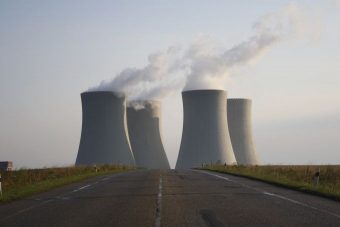
In July 2013, hundreds of people took to the streets in the southern Chinese city of Jiangmen to protest the proposed construction of a uranium processing plant in the region.
The $6 billion plant would have supplied fuel for the country’s rapidly expanding nuclear power industry. But the plan was dropped in the face of public opposition, the first case of its kind in China, said Keith Florig, a risk-management researcher at the University of Florida’s Warrington College of Business.
The protest, and its fallout, are important events in a country that has 22 nuclear power reactors under construction and more planned, as well as a growing international business selling nuclear energy technology to countries including Argentina, Britain and Pakistan. Mr. Florig said that this “rate of development hasn’t happened since the late 1960s and early 1970s in the U.S. and Soviet Union.”
At the same time, Mr. Florig characterized China as being underprepared for dealing with the public opinion issues that have plagued nuclear energy in developed countries.
He said that about 15 years ago he had interviewed Chinese energy officials to find out what they knew about nuclear energy development in the West. He found that they were uniformly focused on the technical challenges of controlling nuclear fission and using the heat it produced to boil water, create steam and power electric turbines. No one seemed to be aware of the social, political and economic challenges.
Nuclear energy is not floundering in all developed countries. In France, more than 75 percent of electricity is produced by nuclear power. South Korea gets about 30 percent of its electricity from nuclear and is expanding its production capacity.
Elsewhere, the challenges are as prominent as ever. In Japan, for example, citizens are protesting efforts to reopen nuclear plants that have been closed since the Fukushima accident in 2011. Germany has committed to shutting down all nuclear generation by 2022. The phase-out, announced in the wake of Fukushima, comes amid an increase in wind and solar power.
It has also coincided with the opening of several coal-fired power plants. Germany remains a net exporter of electricity, and its renewable generation has increased rapidly. But it is importing more coal from the United States — a trend helped by the collapse of the European cap-and-trade market for carbon emissions in 2013.
Even in the United States, where support for nuclear energy remains relatively high, development has stagnated. The most recent nuclear power reactor to come online opened in 1996, in Tennessee; its sister reactor is to open next year, though construction on both began in 1973.
But Xu Yi-chong, professor of governance and public policy at Griffith University in Australia, said that “in general, one could say there is a difference between the developing and developed countries.” He said a number of developing countries were expanding their “nuclear fleets.”
Much of the interest in those countries has centered on the prospect of small modular nuclear reactors, a variety of reactor technology designed to be factory-produced, simple and quick to construct, and more robust in terms of safety.
The big American-style nuclear power plants have a capacity of 1,000 megawatts of electrical power. In contrast, an experimental small modular reactor under development in China would have a capacity of 250 megawatts. That size would, in theory, expand the number of possible nuclear power plant sites. Many experts say such plants would need a smaller safety buffer zone and could thus be built closer to big cities.
The modular factory production model is also attractive. China’s nuclear energy development has been facilitated by factory-produced, standardized reactor designs, said Matt Rogers, director of McKinsey & Company in San Francisco. “In the U.S., nuclear reactors are expensive because each one is a bespoke thing, like a custom tailor,” he said. “Anytime you are able to standardize a type of equipment, the costs fall.”
Public policy is also a factor in making nuclear energy economically attractive in China. The country has prioritized nuclear development as part of a strategy to become a world leader in the field. “So there are price controls and forced relationships at every stage of the process,” Mr. Florig said. “There are no free markets and knowing what the costs really are — that’s tough to do.”
In contrast, the United States has neither a policy of promoting nuclear nor a policy of punishing production of greenhouse gases — the other tool that might make nuclear power financially attractive, said M. Granger Morgan, a professor of engineering and public policy at Carnegie Mellon University in Pittsburgh.
Coupled with custom design, that leaves the nuclear industry in the United States saddled with expensive power plants that might not be able to recoup their costs in electricity sales. Since the 1980s, the Tennessee Valley Authority has abandoned plans for 12 reactors because the costs of construction were expected to be higher than the revenue.
In Germany, where public policy actively opposes nuclear power, companies that own nuclear power plants could end up in even more financial trouble.
Under the phase-out plan, the four large power companies that own Germany’s nuclear plants are responsible for the costs of deconstruction, waste treatment and disposal. But the funds to pay for that exist mostly on paper, said Christoph Podewils, head of communications at Agora Energiewende, a research and analysis group.
Whether the money will be real when it is needed depends on the success of the companies’ investments and what happens with interest rates. “The pessimistic view would be that the obligations are higher than the net worth of the companies,” Mr. Podewils said.
Source: nytimes.com
